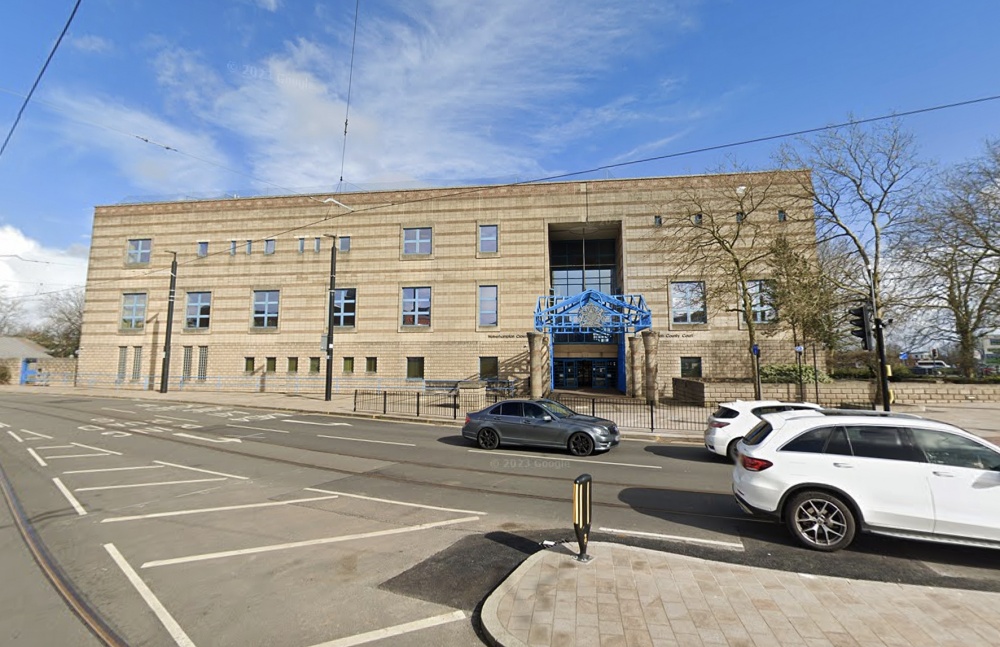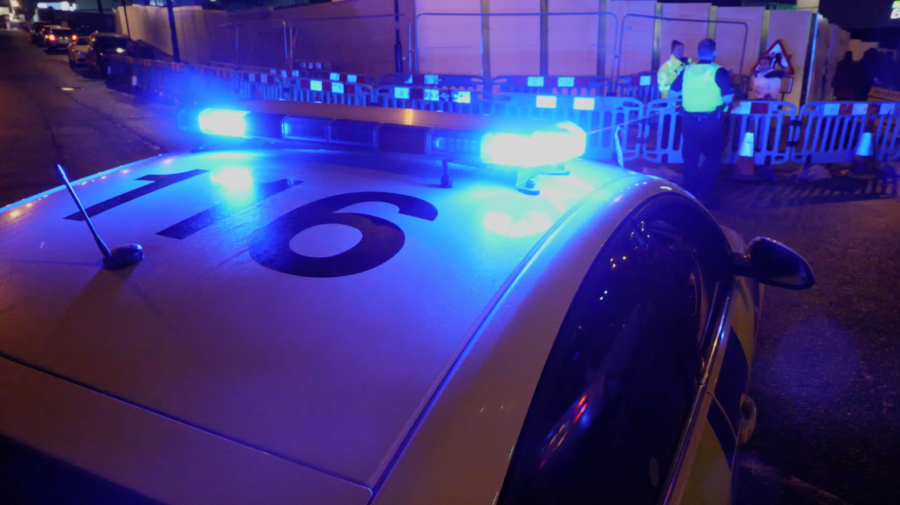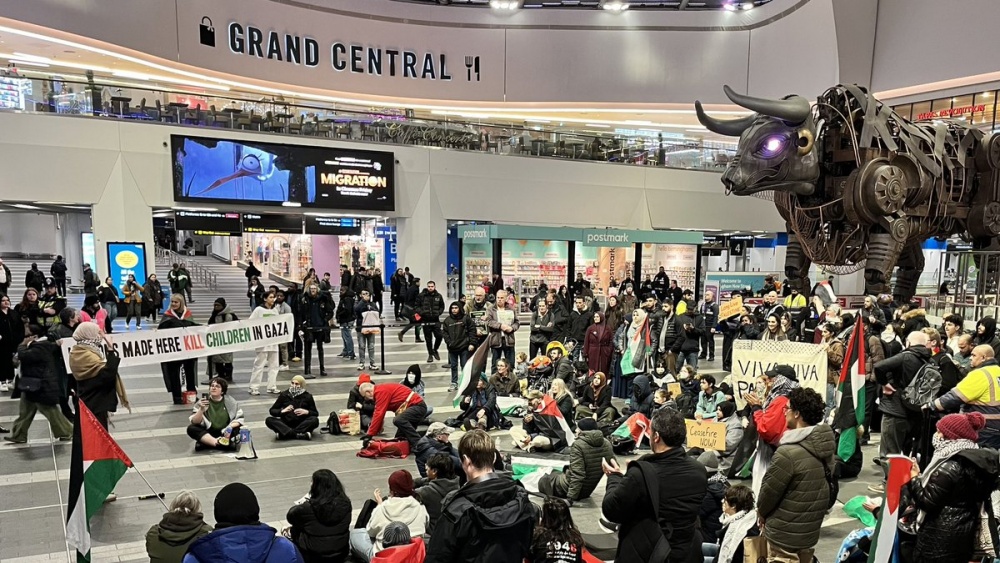Chinese Labour Corps: Exhibition marks the forgotten men of the First World War
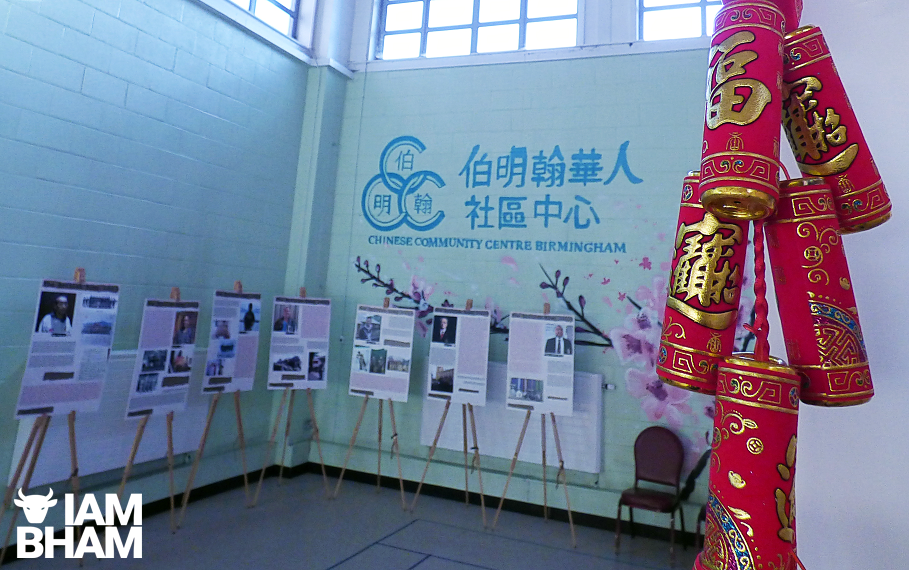
The Chinese Community Centre-Birmingham is commemorating the forgotten men of World War I – the Chinese Labour Corps – in an exhibition being held to coincide with Chinese New Year.
A long forgotten aspect of the First World War has been brought to light in a new exhibition that is currently on display in Birmingham.
The Chinese Labour Corps (CLC) played an important role by clearing the battlefields after hostilities ended. This also included the task of removing unexploded bombs and locating bodies of dead soldiers in the trenches.
The CLC was a force of workers recruited by the British government in World War I to free troops for front line duty by performing support work and manual labour. The French government also recruited a significant number of Chinese labourers, and although those labourers working for the French were recruited separately and not part of the CLC, they are often considered to be so.
In total, some 140,000 men served for both British and French forces before the war ended and most of the men were repatriated to China between 1918 and 1920.
The new city exhibition in aims to educate and inspire by sharing the histories of these men.
Anna Yim, CEO of the Chinese Community Centre-Birmingham, said:
“In November 2018, Britain commemorated the end of World War I with events across the country. One group consistently overlooked was the Chinese Labour Corps – 140,000 volunteers from mainland China who were sent by the Chinese government to support the British and French armies on the Western Front.
“While hostilities ceased in November 1918 and troops returned home, the CLC remained behind to clear battlefield debris with the final units not leaving until September 1920, almost two years after armistice.”
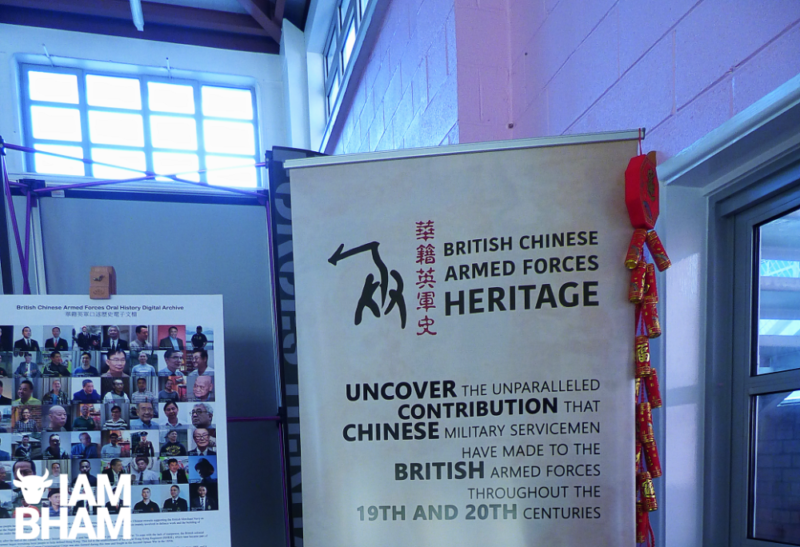 Rangzeb Hussain
Rangzeb Hussain By the end of 1917 there were 54,000 Chinese labourers with the British Imperial forces in France and Belgium.
The workers, mainly aged between 20 and 35, served as labour in the rear echelons or helped build munitions depots. They were tasked with carrying out essential work to support the frontline troops, such as unloading ships, building dugouts, repairing roads and railways, digging trenches and filling sandbags.
Some worked in armaments factories, others in naval shipyards, for a pittance of one to three francs a day. At the time they were seen just as cheap labour, not even allowed out of camp to fraternise locally, dismissed as mere coolies.
When the war ended some were used for mine clearance, or to recover the bodies of soldiers and fill in miles of trenches. Men fell ill from the poor diet and the intense damp and cold, and on occasion they mutinied against their French and British employers or ransacked local restaurants in search of food. Their contribution went forgotten for decades until military ceremonies resumed in 2002 at the Chinese cemetery of Noyelles-sur-Mer.
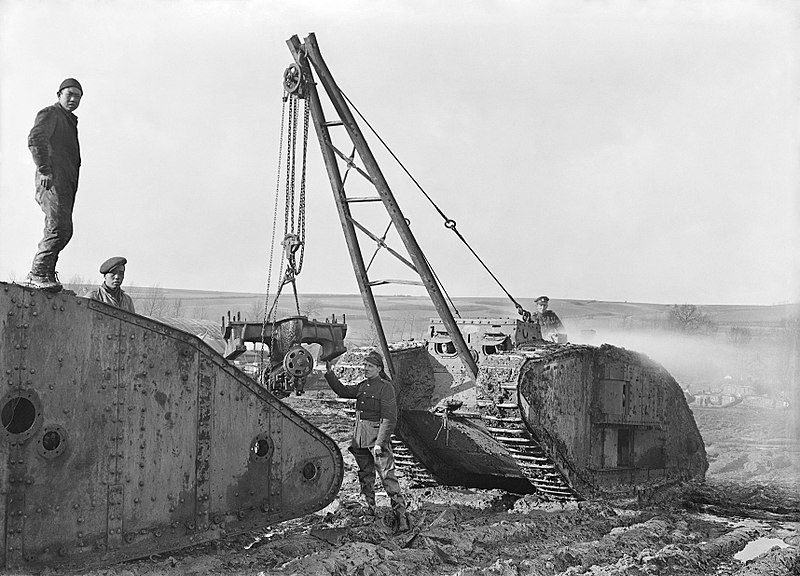 David McLellan / UK Gov
David McLellan / UK Gov After the war, the British government sent a War Medal to every member of the CLC. The medal was like the British War Medal issued to every member of the British armed forces, except that it was of bronze, not silver.
The last surviving member of the Chinese Labour Corps, Zhu Guisheng, died in La Rochelle on 5 March 2002 at 106 years old. He had also served in the French Army during World War II
The material for the exhibition includes extracts from testimonies from the men who formed part of the Chinese Labour Corps. Their memories and photographs add a new a narrative to the First World War which is often only seen from a Western perspective by historians.
Anna Yim added:
“We very much hope that Chinese and non-Chinese communities in Birmingham and the West Midlands will come and learn about the contribution and sacrifices made by this group which was made up largely of peasants with some students who wanted to learn about Western ways.”
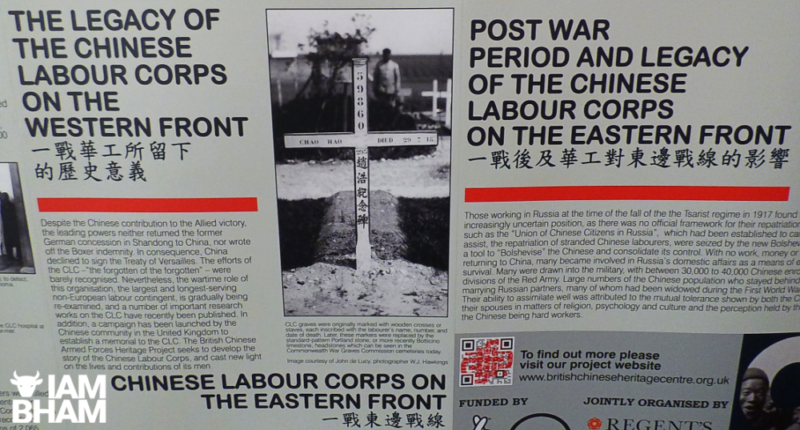 Rangzeb Hussain
Rangzeb Hussain Who were the Chinese Labour Corps?
- Between 1917-1920, 140,000 men were sent from mainland China to support Britain and her allies – France, America and Russia.
- The majority served in France but there were units on the Eastern Frontier and in Africa.
- The majority of the men were from rural areas where they faced poverty and destitution. Joining the CLC gave them the opportunity for paid manual work abroad rather than starve in their native country.
- Students were also employed as interpreters.
- The first units arrived on the Western Front in April 1917. In May 1919, there were still 80,000 Chinese labourers in France. The final units did not leave until September 1920, nearly two years after Armistice.
- The role was to provide physical labour behind the battlefront – building roads, digging trenches, repairing vehicles and machinery, etc. They also cleared dead bodies from the battlefields. Although their role was non-combatant and they are often described as being well behind the battle lines, the tasks of clearing bodies and debris such as mines and shells (some unexploded) from the battlefields meant their lives were at risk. At least 2000 died from shellfire or disease in France.
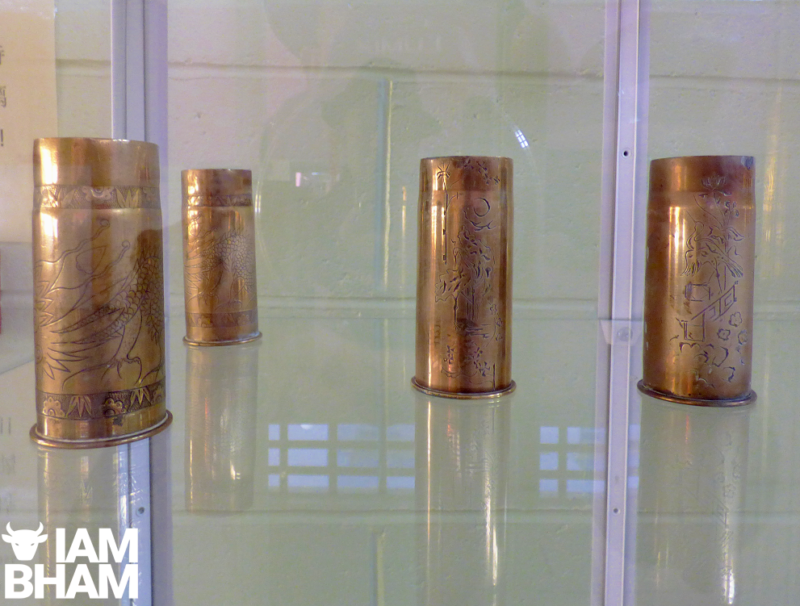 Rangzeb Hussain
Rangzeb Hussain Where is the exhibition being displayed?
- Three UK Chinese organisations have conducted projects on the Chinese Labour Corps over the last 6 years: Ming Ai Institute, Chinese in Britain Forum and the Meridian Society.
- The Chinese Community Centre-Birmingham is borrowing elements from the Ming Ai Institute ‘British Chinese Armed Forces Heritage’ project and Chinese in Britain Forum ‘Ensuring We Remember’ campaign to form the exhibition – ‘Chinese Labour Corps: the forgotten men of World War I’.
- The FREE exhibition will be launched on Friday 1st February at the Chinese Community Centre-Birmingham in Bradford Street, at a private event but it will then be open to the public between 2pm-7pm on launch day, then Saturday 2nd February 10am-1pm, Monday 4th – Friday 8th February 10am-4pm.
- It will be transferred to the Library of Birmingham Spotlight zone where it will open on Monday 11th February. Selected content will be on display at the Library due to limited space. It closes on Friday 1st March.
- There will be a FREE panel discussion in the Library’s Heritage Learning Space on Wednesday 27th February, 12pm-5pm. Guest speakers are Steve Lau (Chinese in Britain Forum), Chungwen Li (Ming Ai Institute) and Peng Wenlan (Meridian Society).
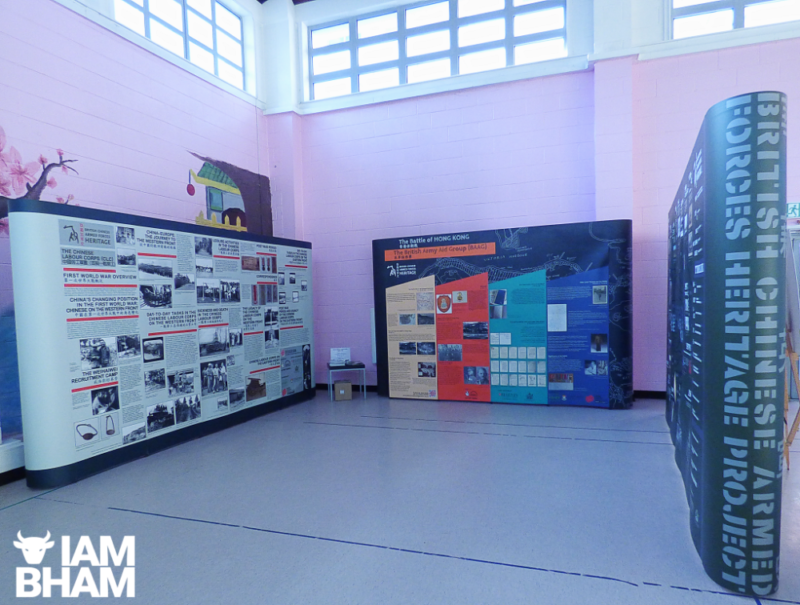 Rangzeb Hussain
Rangzeb Hussain The exhibition will be on display at the Chinese Community Centre-Birmingham, Bradford Street, Digbeth from Friday 1st to Friday 8th February. It will then be transferred to the Library of Birmingham Spotlight zone on Monday 11th February where it will stay until 1st March.







